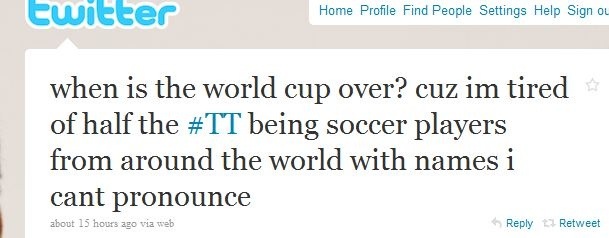Expect to see a lot of this again in a couple of months
by Keidra Chaney
A recent New York Times article talked about how social media analysts give Twitter trending topics too much credit for consumer influence offline. The example used was the online furor over the bigoted comments of the Duck Dynasty stars, where the online comments didn’t necessarily reflect the views of Duck Dynasty‘s core viewership. As someone who works in social media as my career, my response to this is “duh.”
There’s a couple of things at play in my opinion. Unlike traditional web analytics and mobile analytics, the methodology of social media data collection is comparatively in the dark ages, there’s not much industry consistency in how social media data is collected and archived, and even with access to an API, data analysts are still at the mercy of the platform when it comes to accessing data, or even defining what data points are being collected. That’s why Facebook is such a hot mess when it comes to using analytics in any kind of strategic way for audience development. (No offense, FB)
Then, even beyond that, putting the data that’s collected into context is even more important with social media, where segmenting audience and understanding online subcultures is absolutely crucial for any kind of insight to be gleaned. Twitter, in particular, has long been a nexus of subcultures that communicate internally with each other, but in a public space. Sometimes, the volume of conversation within those audiences causes the topic to bubble to the surface and become “discovered” by a broader audience- which happens commonly with trending topics on Twitter.
Mainstream media pundits and social analysts “discovered ‘black Twitter'” last year, for example, but many of us know that it and other online communities/subcultures have existed all along. The World Cup is this year, and hopefully, when teams and players trend on Twitter it won’t be a surprise or a new insight again for analysts, as it was last time around.
This tends to happen anytime a “foreign” topic appears on Twitter’s trending radar, whether it’s the BET Awards (at least several years ago), the World Cup, K-pop fans sending get well wishes to a sick star, or social justice topics like #notyourasiansidekick. It’s not so much that these trending topics lack mainstream influence, they’re important topics of conversation within the communities having said conversations; they’re just not always identifiable to the ad agencies, media companies, and Silicon Valley analysts that presume to decode the everyday language of Twitter.
The infatuation with Big Data and social media still gets stymied by traditional media definitions of popularity, influence and reach, and more pointedly, by definitions of what kind of person makes up a commercially and socially desirable media audience online and off. When “outsider” trending topics become mainstream, it continually fascinates social media experts even though it’s pretty much woven into the fabric that makes Twitter the town hall of social media that it is. When (or if) we see the diversity of online audiences reflected in the meeting rooms of mainstream media, perhaps these trending conversations will be less of a surprise.




